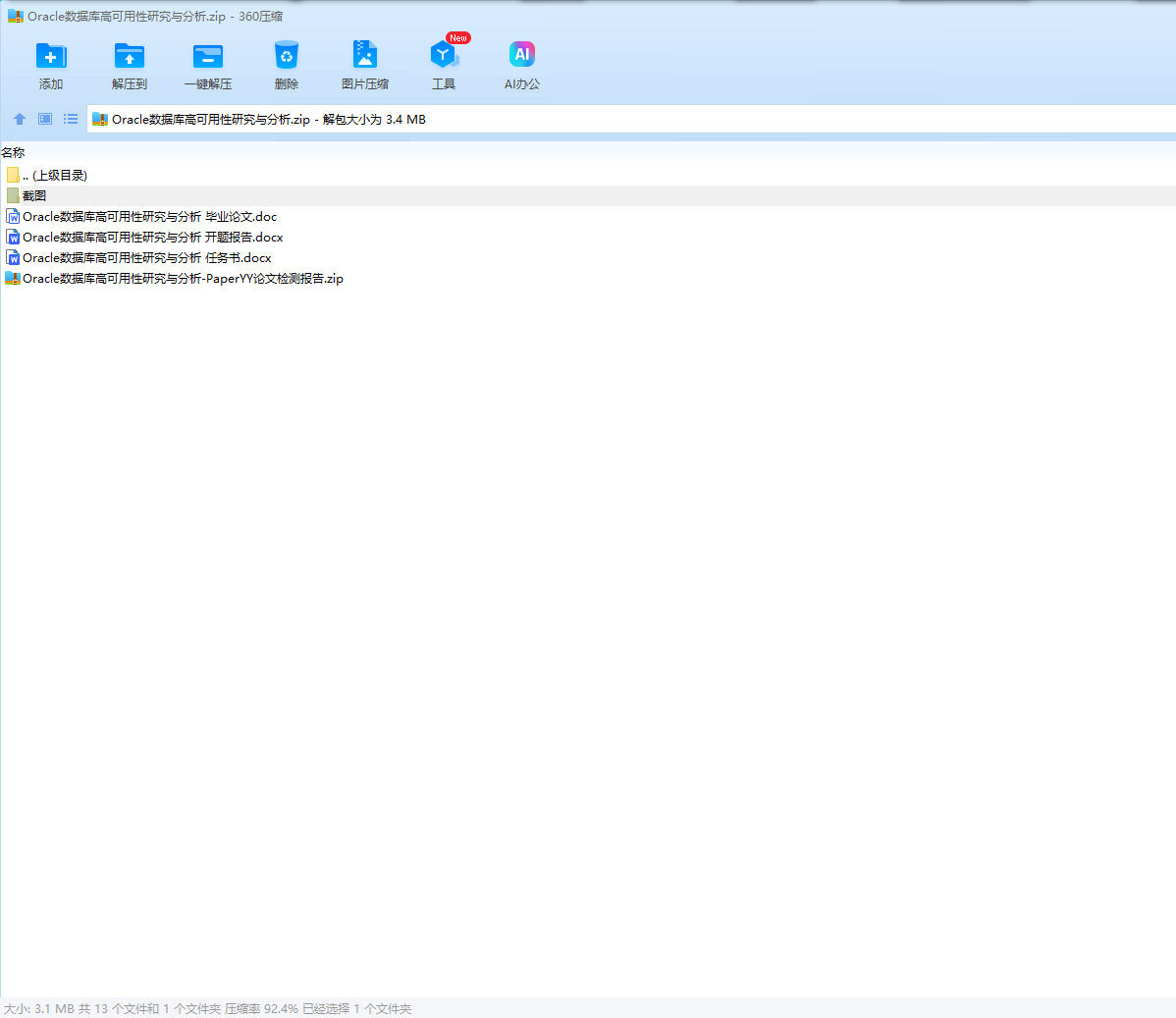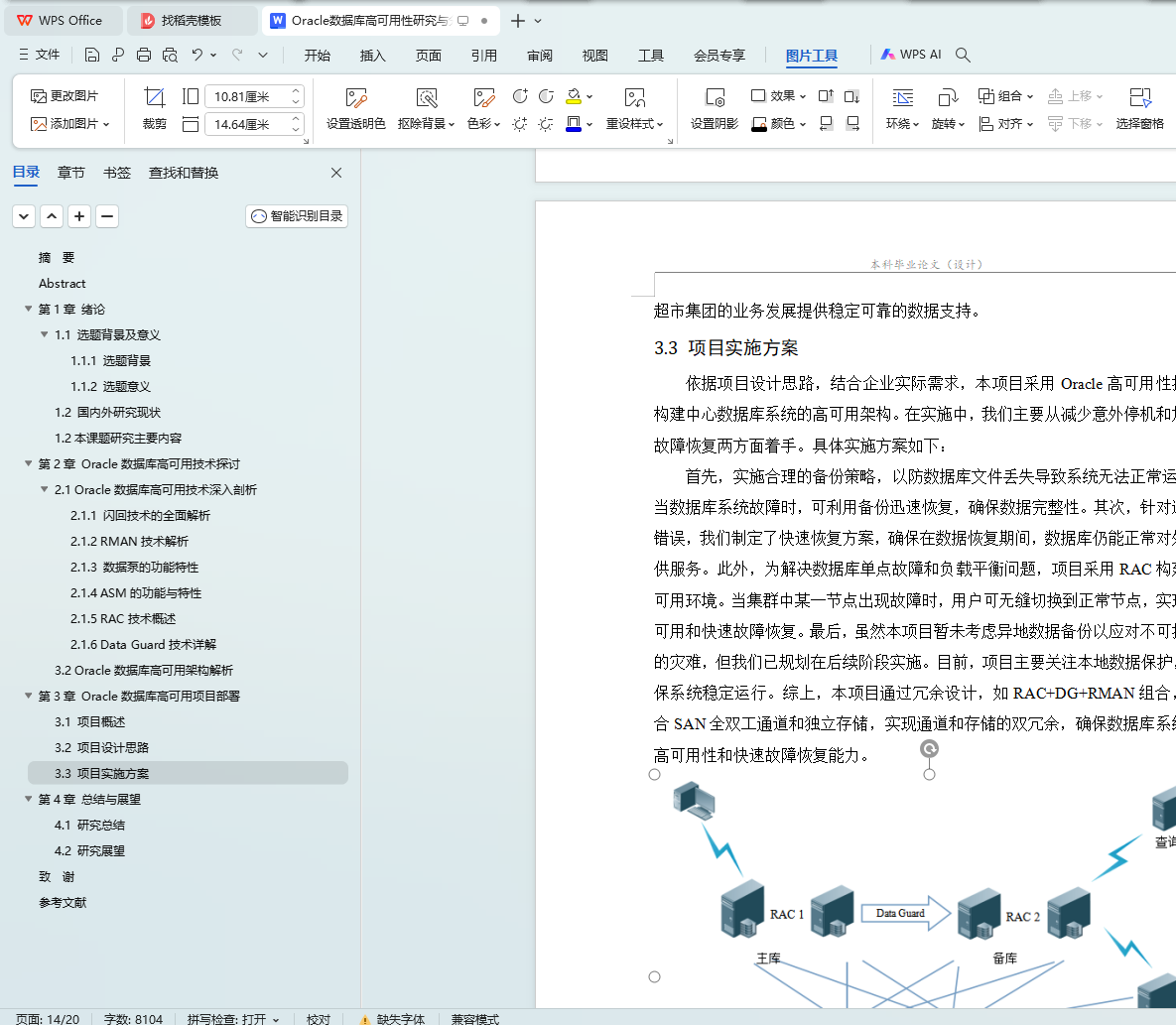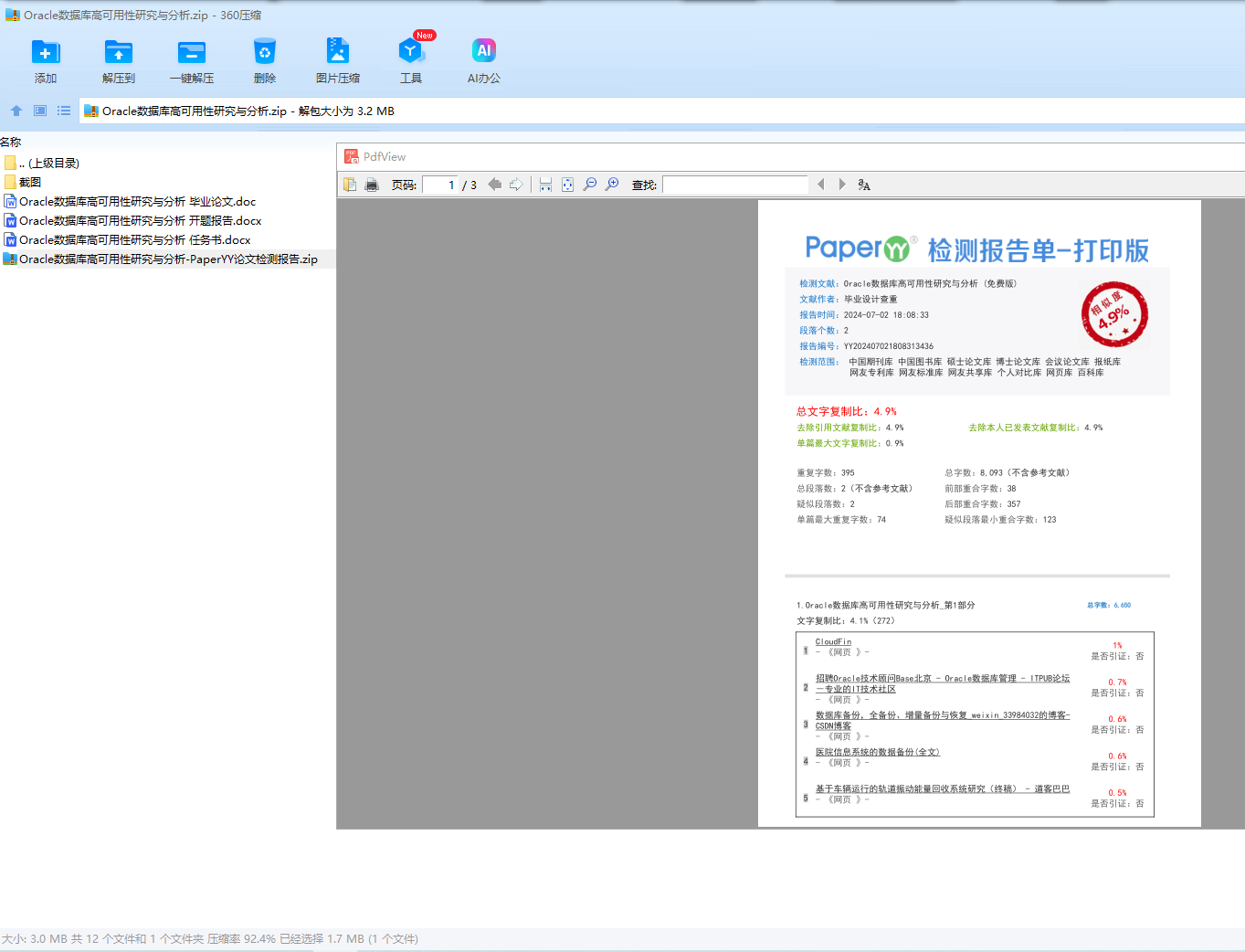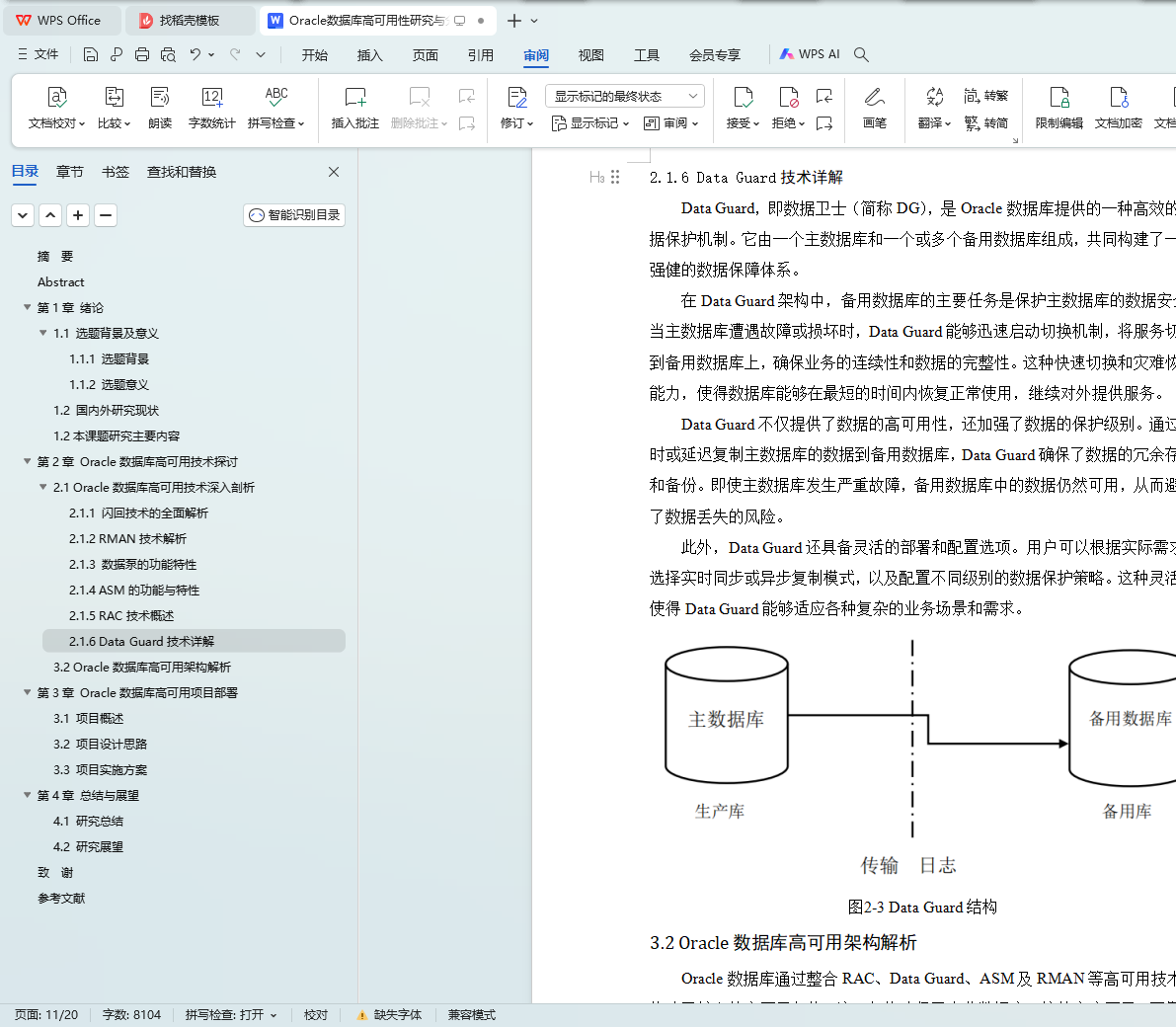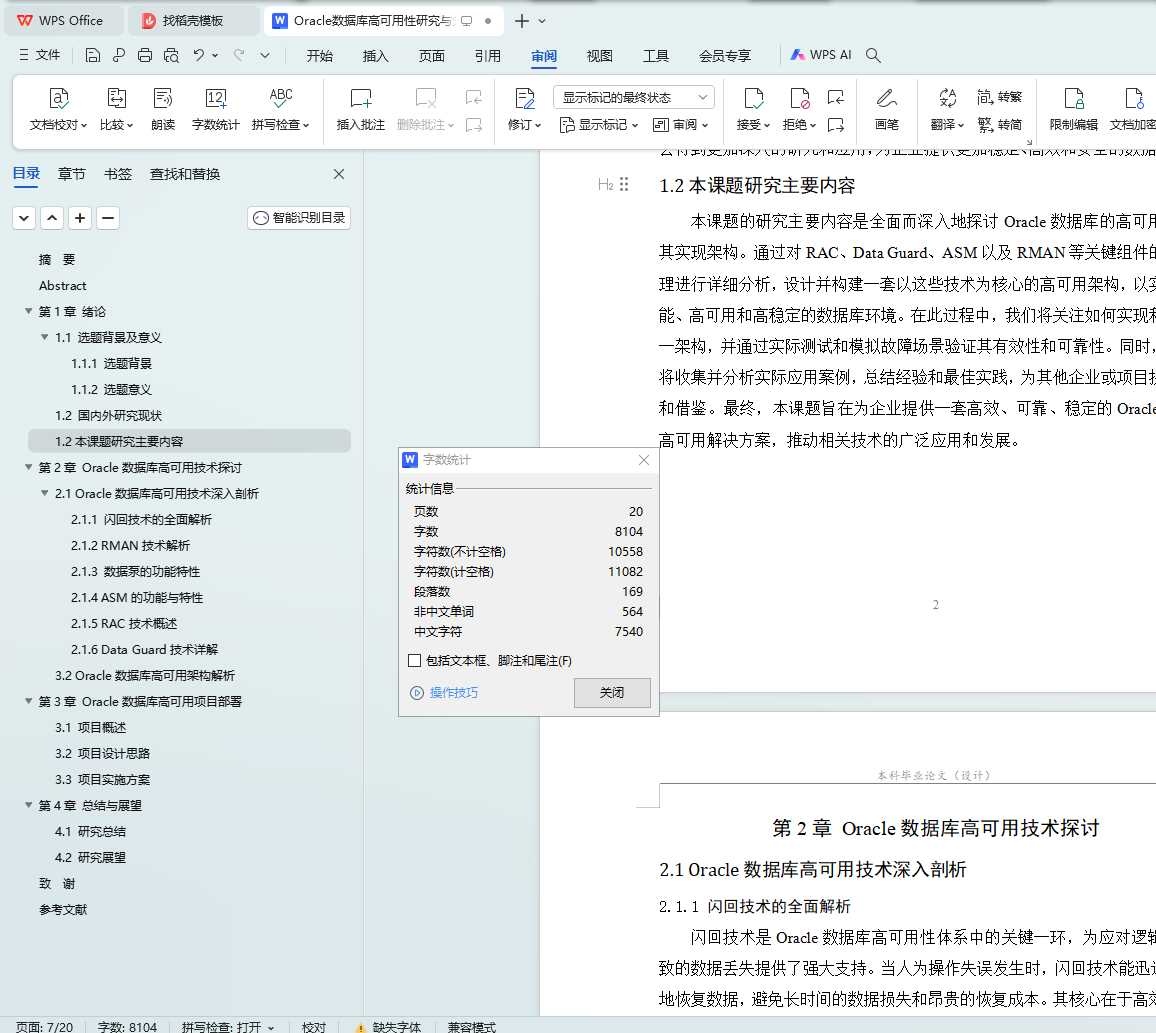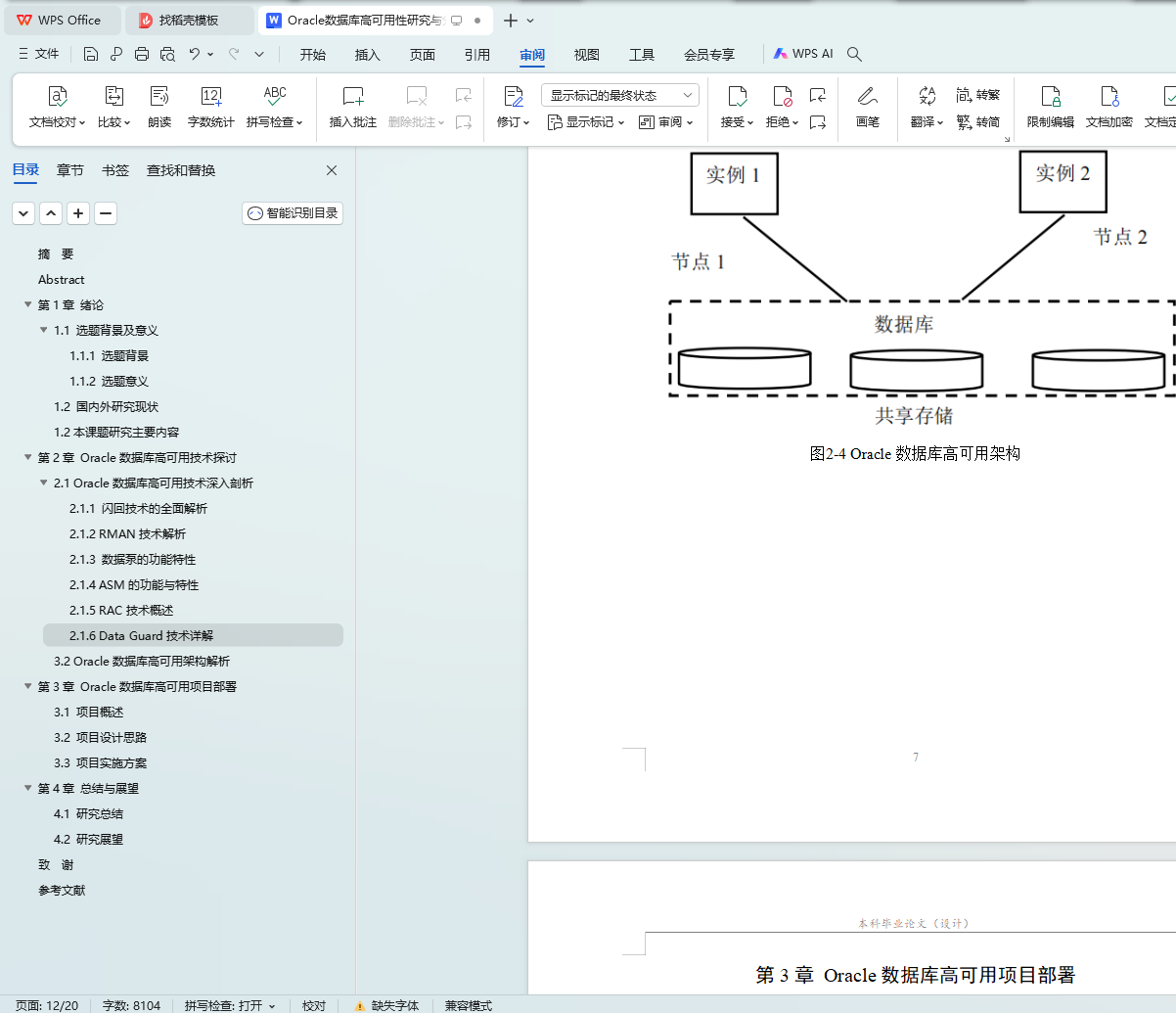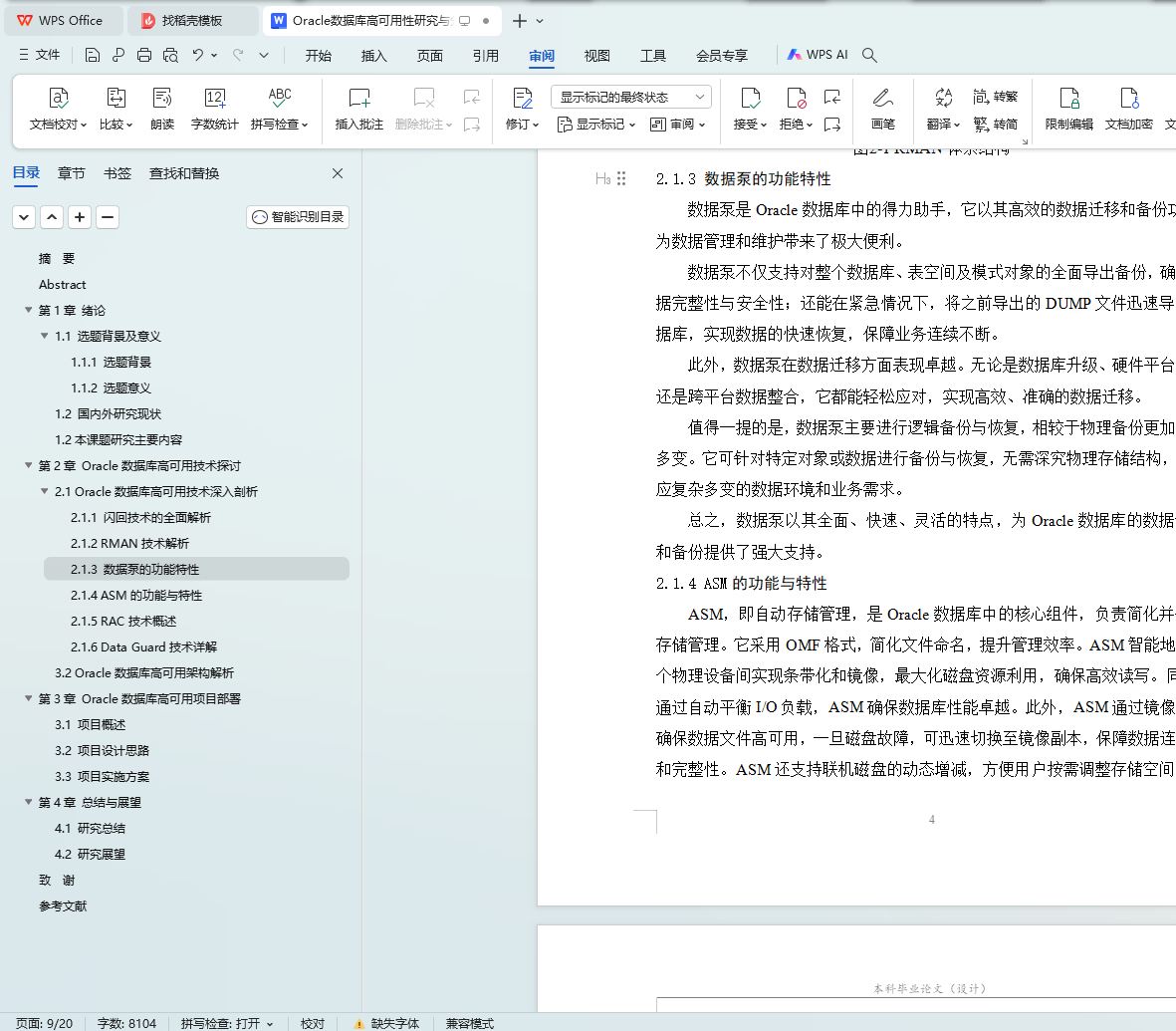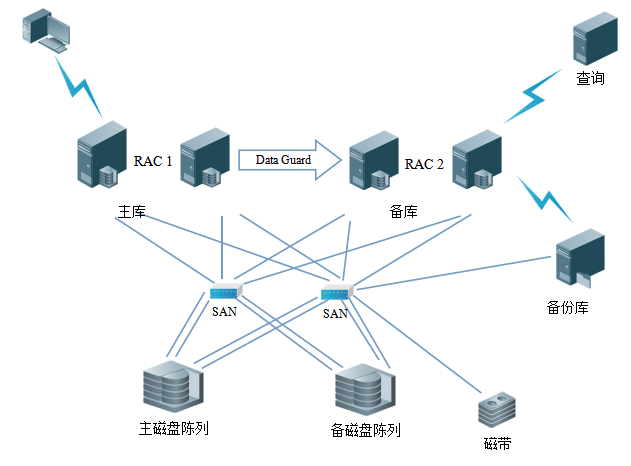本科毕业论文(设计)
Oracle数据库高可用性研究与分析
|
学生姓名:
|
姓名
|
|
指导教师:
|
姓名
|
|
学 部:
|
理学部
|
|
专 业:
|
物理学
|
|
学 号:
|
|
|
班级(届):
|
|
二〇二四年X月X日
学位论文原创性声明
本人所提交的学位论文《 》 ,是在导师的指导下,独立进行研究工作所取得的原创性成果。除文中已经注明引用的内容外,本论文不包含任何其他个人或集体已经发表或撰写过的研究成果。对本文的研究做出重要贡献的个人和集体,均已在文中标明。
本声明的法律后果由本人承担。
论文作者(签名): 指导教师确认(签名):
年 月 日 年 月 日
学位论文版权使用授权书
本学位论文作者完全了解河北师范大学汇华学院有权保留并向国家有关部门或机构送交学位论文的复印件和磁盘,允许论文被查阅和借阅。本人授权河北师范大学汇华学院可以将学位论文的全部或部分内容编入有关数据库进行检索,可以采用影印、缩印或其它复制手段保存、汇编学位论文。
保密的学位论文在_____年解密后适用本授权书
论文作者(签名): 指导教师(签名):
年 月 日 年 月 日
摘 要
本文深入研究了Oracle数据库的高可用技术,重点探讨了RAC(实时应用集群)、Data Guard、ASM(自动存储管理)以及RMAN(恢复管理器)等核心组件的原理与框架。通过构建一套以“RAC+RMAN”为核心的高可用架构,本文旨在为企业提供一套高性能、高可用且高稳定的数据库环境。该架构不仅能够有效应对节点故障,实现数据库的故障转移与负载均衡,还能通过数据同步与冗余镜像技术,确保数据的完整性与一致性。此外,本文还详细分析了该架构在灾难备份与恢复方面的优势,为企业提供了全方位的数据库安全保障。
关键词:Oracle数据库;高可用技术;RAC;Data Guard;ASM;RMAN
Abstract
This paper explores the highly available technology of Oracle database, focusing on the principle and framework of core components such as RAC (real-time application cluster), Data Guard, ASM (automatic storage management) and RMAN (Recovery Manager). By building a set of high availability architecture with "RAC + Data Guard + ASM + RMAN" as the core, this paper aims to provide enterprises with a high performance, high availability and high stability database environment. The architecture can not only effectively deal with node faults, realize database failover and load balancing, but also ensure the integrity and consistency of data through data synchronization and redundant mirror technology. In addition, this paper also analyzes the advantages of the architecture in disaster backup and recovery, and provides a full range of database security guarantee for enterprises.
Key words: Oracle database; high availability technology; RAC; Data Guard; ASM; RMAN
目 录
摘 要
Abstract
第1章 绪论
1.1 选题背景及意义
1.1.1 选题背景
1.1.2 选题意义
1.2 国内外研究现状
1.2本课题研究主要内容
第2章 Oracle数据库高可用技术探讨
2.1 Oracle数据库高可用技术深入剖析
2.1.1 闪回技术的全面解析
2.1.2 RMAN技术解析
2.1.3 数据泵的功能特性
2.1.4 ASM的功能与特性
2.1.5 RAC技术概述
2.1.6 Data Guard技术详解
3.2 Oracle数据库高可用架构解析
第3章 Oracle数据库高可用项目部署
3.1 项目概述
3.2 项目设计思路
3.3 项目实施方案
第4章 总结与展望
4.1 研究总结
4.2 研究展望
致 谢
参考文献
